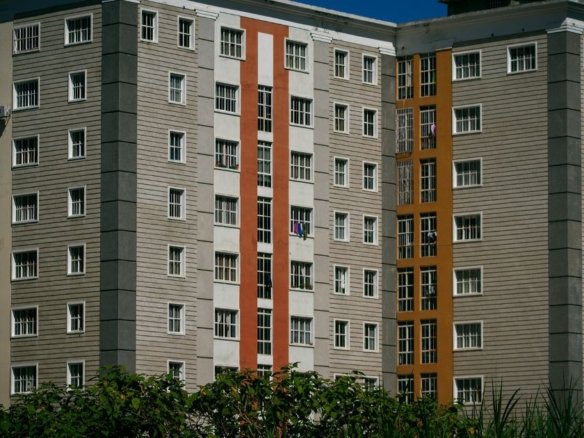When buying a property—especially in under-construction residential or commercial developments—homebuyers often find themselves navigating through a long list of costs added to the base sale price of the property. These additional charges can significantly impact the total cost of ownership, and some of the most commonly encountered ones include External Development Charges (EDC), Infrastructure Development Charges (IDC), and Interest-Free Maintenance Security (IFMS).
While these charges are legally permitted and have a specific purpose, many buyers either overlook them during the booking process or are not fully aware of what these terms mean. As a result, they may feel confused or misled when the builder demands these payments, sometimes even after booking or near possession. Understanding these charges is crucial for transparency and budgeting, as well as for avoiding disputes or surprises during the course of property acquisition.
This article aims to break down each of these charges in simple terms, explain why they are levied, how they are calculated, when developers are allowed to collect them, and what rights buyers have under the law, including under RERA (Real Estate Regulatory Authority). With a clear understanding, buyers can make better-informed decisions and ensure they are not overcharged or misled during the homebuying process.
1. What is EDC (External Development Charges)?
EDC stands for External Development Charges, and it refers to the fees collected by the local development authority from real estate developers for the creation and maintenance of external infrastructure that lies outside the boundaries of a housing or commercial project, but which is essential for the overall functioning and livability of the area.
These charges are not for internal facilities (like clubhouses or internal roads), but for public infrastructure that supports all the developments in a locality or sector.
✅ What does EDC cover?
External Development Charges typically go toward the following infrastructure:
Main Roads and Highways: Construction and widening of roads that connect the housing project to main arterial roads and other parts of the city.
Sewerage Systems: Laying down of sewer pipelines and connection to the city’s main sewer line.
Water Supply Networks: Providing access to government-approved water pipelines, reservoirs, and pumping stations.
Electricity Infrastructure: Setting up power substations, transformers, and main electrical lines outside the housing complex.
Communication Lines: Laying underground cables and ducts for telephone lines, broadband, and other utilities.
Drainage Systems: Developing stormwater drains and water management systems to prevent flooding in the surrounding areas.
✅ Why is EDC charged?
EDC ensures that the surrounding infrastructure keeps pace with urban expansion. Without external development, even the most luxurious housing complex would be of little use—residents wouldn’t have proper access roads, water, sewage disposal, or electricity. These developments are undertaken by the government or development authority, but the cost is recovered from builders since their project benefits directly from this infrastructure.
✅ Who pays EDC initially?
The process is as follows:
The local development authority (e.g., HUDA – Haryana Urban Development Authority, GNIDA – Greater Noida Industrial Development Authority, etc.) levies the EDC amount based on the area, project type, and applicable rates.
The developer pays this amount in a lump sum or installments to the authority as part of the project licensing and approval process.
The developer then recovers this cost from individual buyers, usually proportionately, based on the super built-up area of each flat or unit.
For example, if a builder pays ₹100 crore in EDC for a project and there are 1,000 units, the cost may be distributed equally or on a per-square-foot basis.
✅ Is the buyer legally obligated to pay EDC?
Yes, but with conditions:
The builder must clearly disclose the EDC amount in the Builder-Buyer Agreement as per RERA (Real Estate Regulation and Development Act, 2016).
EDC must be supported by documentation, such as demand letters or notifications from the local authority.
Builders cannot arbitrarily revise the EDC unless there’s an actual increase in the charges by the government and supporting documents are provided.
✅ Common Issues Faced by Buyers
Sudden Increase: Builders may demand additional EDC mid-project, citing government revision—buyers should verify this with official circulars.
No Break-up Given: Sometimes, EDC is bundled with other charges—always request a detailed break-up.
Delayed Development: Even after paying EDC, some areas see delayed or no infrastructure—in such cases, buyers can file complaints with the authority or under RERA.
2. What is IDC (Infrastructure Development Charges)?
IDC stands for Infrastructure Development Charges, and these are levied by the State Government or its designated development authority on real estate developers to fund large-scale, regional infrastructure projects. Unlike EDC (External Development Charges), which is linked directly to the infrastructure surrounding a specific housing project, IDC focuses on broader, citywide or regional infrastructure improvements.
✅ What Does IDC Cover?
Infrastructure Development Charges are meant to finance long-term, large-scale projects that benefit the entire urban region, not just a single residential or commercial development. These projects are essential for supporting a growing urban population and facilitating sustainable urban planning.
Common infrastructure projects funded through IDC include:
Highways and Expressways: Major roads and expressways that improve regional connectivity.
Metro Rail Projects: Metro corridors, stations, and supporting infrastructure that improve public transport in urban and suburban areas.
Flyovers and Bridges: Construction of flyovers, elevated roads, and bypasses to ease traffic congestion.
Water Treatment and Sewerage Plants: Large water purification systems and sewage treatment plants for entire sectors or cities.
Power Generation and Distribution Facilities: Establishment or expansion of power plants, substations, and transmission infrastructure to ensure adequate and reliable power supply.
These developments benefit multiple housing societies, commercial hubs, and industrial zones across districts or cities.
✅ Who Imposes and Collects IDC?
The State Government or its planning/development agency (like DTCP in Haryana or YEIDA in Greater Noida) determines and imposes IDC.
Developers are charged IDC as part of the license fee or project approval cost.
The amount depends on several factors, including:
Location (urban, suburban, or rural)
Land use (residential, commercial, mixed-use)
Project scale and built-up area
✅ How is IDC Paid and Recovered?
Developer pays IDC: At the time of applying for project licenses or land conversion permissions, the developer must pay IDC to the government.
Developer recovers IDC: The builder then passes on the cost to buyers, either as:
A lump sum amount
A per square foot rate added to the base selling price
For example, if the IDC is ₹500 per sq. ft. and the flat size is 1,000 sq. ft., the buyer pays ₹5,00,000 as part of IDC.
3. What is IFMS (Interest-Free Maintenance Security)?
IFMS stands for Interest-Free Maintenance Security, and it is a security deposit collected by the builder from buyers, usually at the time of possession or just before handing over the property. The primary purpose of this fund is to ensure the proper upkeep, maintenance, and smooth functioning of the residential or commercial project until a Resident Welfare Association (RWA) or Apartment Owners Association (AOA) is officially formed and takes over the responsibility.
Unlike monthly maintenance charges, IFMS is not a recurring payment but a one-time deposit, and—as the name implies—it does not earn any interest for the buyer.
✅ What Is IFMS Used For?
The IFMS fund acts as a buffer or reserve to meet essential maintenance and operational expenses in the early phase of occupancy and also to form a corpus fund for long-term upkeep. It typically covers:
Maintenance of Common Areas
Regular cleaning, repair, and upkeep of lobbies, staircases, corridors, gardens, and other shared spaces.Operation and Maintenance of Equipment
Expenses related to lifts, DG (diesel generator) sets, fire-fighting systems, water pumps, electrical panels, etc.Security and Housekeeping Services
Salaries for guards, janitors, gardeners, and support staff required for day-to-day operations.Minor Repairs and Emergencies
Small repairs, emergency maintenance, or replacement of defective parts.Creation of a Corpus Fund for RWA
Once the residents form a Registered RWA, the IFMS amount collected by the builder is handed over to them to serve as a base fund for future maintenance needs.
✅ When and How Is IFMS Collected?
Timing: Builders usually demand IFMS just before giving possession, though in some cases it may be asked for during the final demand notice or earlier in the construction stage.
Amount: This varies by project and location, but it is generally charged on a per square foot basis, such as ₹50 to ₹100 per sq. ft. of the super built-up area.
For example, if IFMS is ₹100/sq. ft. and the flat is 1,000 sq. ft., then:
IFMS = ₹100 × 1,000 = ₹1,00,000 (one-time deposit)
🏗️ When Can Developers Charge These Fees?
✅ EDC (External Development Charges) & IDC (Infrastructure Development Charges)
These charges are collected by developers on behalf of the local development authority or state government. Their imposition is governed by strict rules to ensure transparency and prevent overcharging. Here’s how and when these charges can be legally levied:
✔️ 1. After Obtaining Government Approval or License
Developers cannot charge EDC or IDC arbitrarily or before acquiring the necessary approvals.
These charges can only be raised after the developer receives a license to develop the land and the government issues a formal demand for these charges.
The local development authority (e.g., HUDA, GNIDA, DDA, etc.) raises a demand on the builder, and only then can the builder pass the proportionate cost to buyers.
✔️ 2. Break-Up Must Be Provided
Builders are legally required to provide a detailed break-up of how much EDC and IDC is being charged and for what purpose.
Buyers have the right to demand a copy of the government notification or circular that fixes the rate of EDC/IDC applicable to the project.
✔️ 3. Charges Must Be Based on Official Notification Only
EDC and IDC cannot be increased without proper justification or a new government order.
If the development authority revises EDC/IDC, the builder must submit proof (notification) before increasing the charge for buyers.
Arbitrary increases or post-facto additions are considered unfair trade practices under RERA.
✔️ 4. Must Be Disclosed in Agreement for Sale (Under RERA)
The builder is mandated under Section 13 of RERA to clearly mention all charges—including EDC and IDC—in the Agreement for Sale signed with buyers.
Failure to disclose these charges in advance can lead to legal consequences for the builder and entitles buyers to seek redressal.
✅ IFMS (Interest-Free Maintenance Security)
IFMS is different in nature—it is a security deposit for maintenance, not a government-mandated development charge. Therefore, its collection is governed by slightly different principles.
✔️ 1. Charged at the Time of Possession or Just Before
Builders can collect IFMS only once the property is ready for handover.
It is typically included in the final demand notice or payment schedule before possession.
Charging IFMS at an earlier stage (like at booking or during construction) is not justified and may violate buyer rights.
✔️ 2. Must Be Clearly Mentioned in the Builder-Buyer Agreement
The exact amount or rate (per sq. ft.) of IFMS must be specified in the builder-buyer agreement.
The buyer should verify that the IFMS amount is not being collected under vague headings like “miscellaneous charges.”
✔️ 3. Amount Should Be Reasonable and Transparent
Most states have no fixed cap on IFMS, but it must be reasonable and aligned with the size and facilities of the project.
A common range is ₹50–₹100 per sq. ft., but this can vary by location, amenities, and developer.
Buyers should demand a receipt and purpose note for IFMS.
✔️ 4. Transfer to RWA is Mandatory Later
Once the Resident Welfare Association (RWA) is formed, the builder must transfer the IFMS corpus to them.
If the RWA is formed and the IFMS is not handed over, buyers can file a complaint with RERA or consumer forum.
⚖️ Legal and Regulatory Guidelines on EDC, IDC & IFMS Charges
The Real Estate (Regulation and Development) Act, 2016 (RERA) was enacted to ensure transparency, accountability, and fairness in real estate transactions. One of its major concerns is protecting homebuyers from hidden charges and arbitrary cost escalations, including EDC, IDC, and IFMS.
🧾 1. Mandatory Pre-Disclosure Under RERA
Section 13(2) of RERA requires that every cost component, including EDC (External Development Charges), IDC (Infrastructure Development Charges), and IFMS (Interest-Free Maintenance Security), must be clearly disclosed in the Allotment Letter and Builder-Buyer Agreement.
These charges must also be listed in the declaration submitted by the builder to the RERA authority at the time of project registration.
RERA rules in most states (e.g., Haryana, UP, Maharashtra) make it illegal for builders to impose any charge that was not pre-disclosed in the agreement.
🚫 2. Hidden or Post-Sale Demands Are Legally Challengeable
Builders often raise additional demands after booking or even after possession, under vague headings like “increased EDC/IDC,” “enhanced infrastructure cost,” or “extra IFMS”.
Under Section 18 of RERA, any such arbitrary or unjustified demand can be challenged before the RERA Authority or Appellate Tribunal.
Homebuyers are entitled to refuse payment of charges not clearly disclosed in writing during the sale agreement process.
⚖️ 3. Judicial Precedents: Court Orders Against Arbitrary Charges
Indian courts and consumer forums have consistently protected buyers from excessive or unjustified charges:
✔️ Delhi High Court & NCDRC (National Consumer Disputes Redressal Commission):
Held that EDC and IDC cannot be raised unilaterally by builders unless there is a genuine and verifiable demand from the government or local authority.
Builders must produce official documents or circulars justifying the increased amount, or the demand is liable to be struck down.
✔️ Haryana RERA Authority:
Ordered that IFMS must be reasonable and collected only at possession, not earlier.
Any unutilized portion of IFMS must be transferred to the Resident Welfare Association (RWA) once it is formed, and the builder cannot retain it beyond that point.
✅ Tips for Buyers: How to Stay Protected and Informed
When investing in a property, it’s crucial to go beyond just price and amenities. Understanding the finer details of cost components like EDC, IDC, and IFMS can save you from unexpected expenses and legal hassles later. Here’s how you can protect yourself:
1. Ask for a Break-Up of All Charges
Don’t just look at the “total cost” mentioned in the brochure or price sheet.
Ask the developer to provide a detailed cost sheet that separately lists:
Basic sale price
PLC (Preferential Location Charges)
EDC and IDC with per sq. ft. rate
IFMS amount
GST or other taxes
This ensures transparency and allows you to cross-check with legal guidelines.
2. Verify EDC/IDC Against Government Notifications
Builders often inflate or misrepresent government-mandated charges.
Request copies of the official demand letters or circulars from the local development authority (e.g., HUDA, GNIDA, DDA) to verify:
Exact EDC/IDC rates
Basis for any recent increase
You can even check the respective authority’s website for updated fee structures.
3. Demand Payment Proof from Builder
Before paying EDC/IDC, ask the builder to show:
Receipts or challans proving they have paid this amount to the authority.
This avoids double charging or overcharging.
If the builder claims the charges have increased, demand official correspondence as evidence.
4. Check IFMS Details in Possession Documents
IFMS should only be collected at the time of possession, not during the construction phase.
The builder should include:
The per square foot rate of IFMS in the Agreement.
A clear clause mentioning that the IFMS will be transferred to the RWA once formed.
If your project has an RWA, ensure the transfer has been initiated.
5. Consult a Real Estate Lawyer or RERA Advisor
If you are unsure about the legality of a charge or clause, it’s worth getting a quick legal consultation.
Lawyers can help:
Review builder-buyer agreements
Check compliance with RERA
Send legal notices in case of violation
Being proactive at this stage can prevent months of financial and legal stress later.
🏁 Conclusion: Be Informed, Be Empowered
EDC, IDC, and IFMS are legitimate charges meant to support essential infrastructure and maintenance, but only when applied fairly and as per regulations.
With the implementation of RERA, the days of arbitrary and hidden charges are supposed to be over—but only if buyers know their rights and ask the right questions.
As a homebuyer, insist on documentation, verify charges independently, and read every line of the agreement before signing.
Most importantly, remember that you are not helpless—regulators, legal forums, and consumer courts are there to support you if the builder acts unfairly.
A well-informed buyer is the strongest check against unethical real estate practices.





Join The Discussion